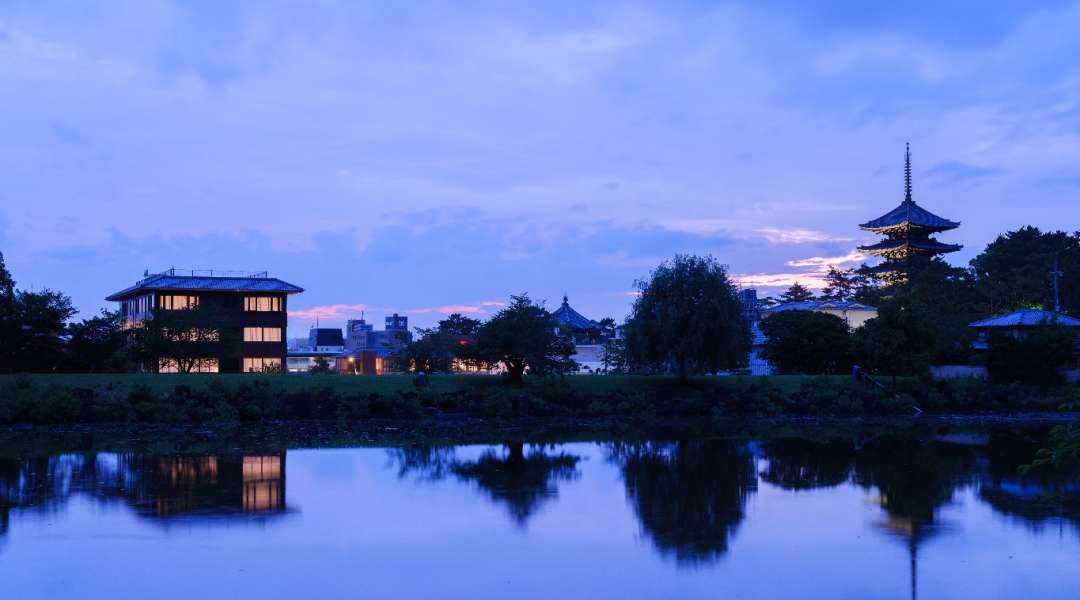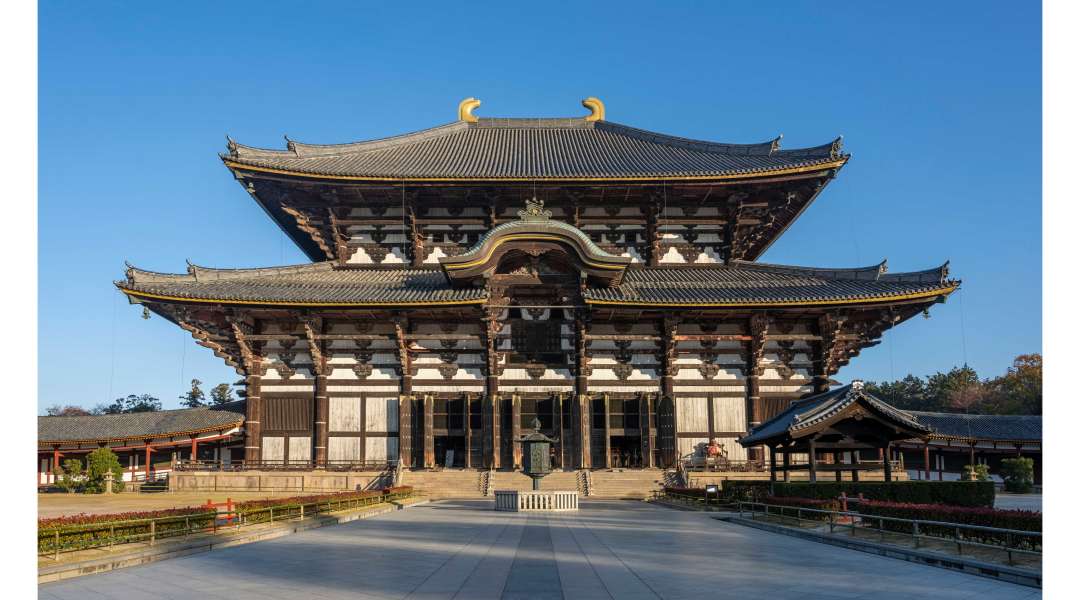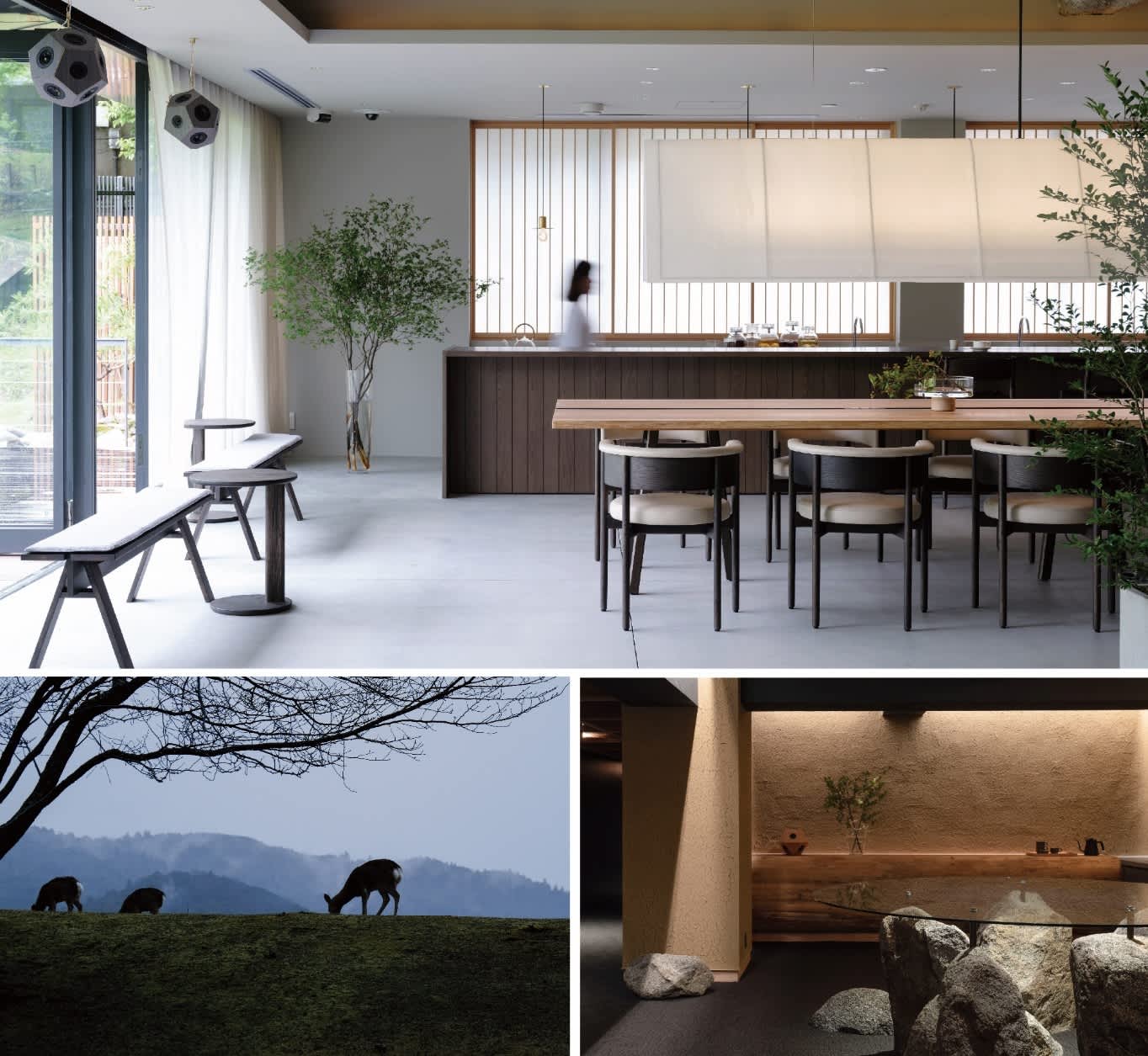
Boasting the most UNESCO World Heritage sites of any city in Japan, Nara offers a unique experience of Japanese history and culture in a relatively compact city.
Nara was the first permanent capital of Japan from AD 710 to 794 and has an impressive list of splendid temples, shrines and traditional gardens to see. At the northern end of the city lies the massive Nara Park, which is home to much beloved (and photographed!) deer that roam the park and the nearby streets freely. The deer are considered sacred and have coexisted with the locals for more than 1,000 years. Please don’t feed them anything but deer crackers (sold around the park).

To the west of the park and inside of the impressive Great Buddha Hall at Tōdai-ji, a massive bronze Buddha statue quietly watches over visitors. The hall is one of the largest wooden structures in the world and is impressive not just because of its sheer scale, but also because of the sublime carpentry work visible throughout the building. The vast grounds of the temple invites leisurely strolls and a visit should not be rushed.

Another must visit in the park is the secluded Kasugataisha Shrine surrounded by lush greenery of the surrounding forest. The main shrine buildings are surrounded by long corridors lined with 1,000 hanging lanterns. A breathtaking sight. The approach up through the forest is lined with thousands of ancient stone lanterns and sets the mood. Take the back road from the Shrine back into Nara city and you will arrive at an area known as Takabatakecho. It’s a predominantly residential area but dotted with gems such as the former residence of novelist Naoya Shiga. The carefully renovated house is a beautiful mixture of traditional Japanese and western architecture. Right across the street, coffee and other refreshments can be enjoyed alfresco at the Takabatake Salon, albeit only open on Fridays through Sundays.

Coming back into town, follow the Naramachi Odori that takes you through the heart of the old Naramachi. The whole area is dotted with old traditional houses, many turned into guest houses, restaurants, shops or hotels.

On the main street, visit the Nara Craft Museum to get a glimpse of the many traditional crafts the city has to offer. Exhibits include Narasarashi textiles, Akahada-yaki pottery, charcoal ink and Nara writing brushes. There is also a small museum shop where local crafted products are on offer as the perfect gift to take home. Another favourite museum is the small Naramachi Koshi No Ie, showcasing the vernacular architecture of the area. It is from the end of the 19th century and beautifully restored with latticed windows, stranded earthen floor and an inner courtyard that allows in natural light and a gentle breeze on hot summer days.

If you get hungry try the local Kaki-no-ha-zushi at Hiraso. This shop specialises in persimmon-leaf wrapper sushi, a traditional preserving method from the Yoshino region of Nara. Salted Mackerel, salmon or conger eel are wrapped in persimmon leaves that have naturally occurring antibacterial and preservative effects. The sushi will keep for up to three days so is perfect for a picnic in the park or even further away.
If you are looking for a more substantial and varied lunch or dinner Awa Naramachi is highly recommended. The restaurant is housed in a beautifully restored traditional Machiya house. The menu features a wide range of local vegetables (known as Yamato Yasai). When dishes are presented, each ingredient is carefully explained, heightening the dining experience. The local sake menu is also worth sampling and although only Japanese is spoken, a night at Awa is sure to be a memorable one.

While Nara can be reached easily from Kyoto as a day trip, there are a number of excellent lodgings in the city that make spending the night well worth it. For larger groups, the recently opened Miroku Nara offers simple modern rooms that sleep up to four, right by the Nara Park. For a more private and unique experience, stay at one of the carefully renovated machiyas at Kidera-no-ie. Each house comes with a small kitchen, spacious bathrooms and is a wonderful way to experience not just Nara city, but also Nara’s traditional architecture up close and personal.
For more Japan-facts and updates follow us on Facebook, Instagram, and Twitter!

















































